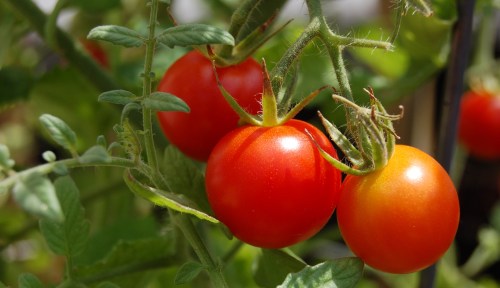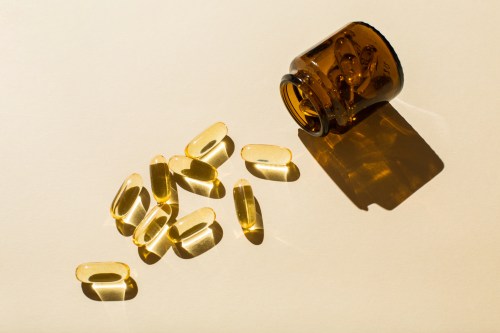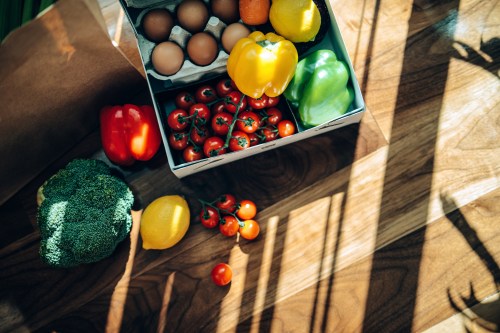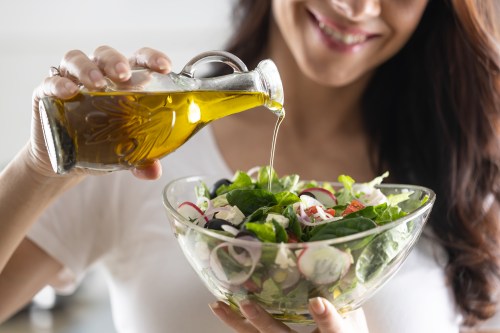Know what’s better than fresh, savory-yet-spicy salsa? Fresh salsa made with vegetables and herbs from your own garden. If you’re a fan of salsa or want to have a reason to grow specific veggies and fruits, then you’ll definitely want to consider a salsa-themed garden. “Growing a salsa garden is highly motivational,” says Mike DeRose, a gardener and the founder of The Pool Gardener. “You know what all the effort is for and what you’re working toward from the get-go.”
Experts in This Article
Mike DeRose is a professional gardener and the founder of The Pool Gardener.
Thomas O’Rourke is a professional gardener from Horticulture Magazine.
Be aware that the salsa ingredients won’t be be planted at the same time, nor will everything be ready to harvest simultaneously. “Onions and garlic will take around 18 weeks, capsicum and peppers should take roughly the same length of time as your tomatoes—usually 10-16 weeks—and cilantro can be harvested from seed in as little as eight weeks,” says Thomas O’Rourke, a gardener at Horticulture Magazine. But when it all comes together—yum.
Where to plant
Got some dirt? Then you can grow a salsa garden. “It’s definitely acceptable to grow all plants in the same plot, but you will need to ensure each is cordoned and given adequate growing space,” says O’Rourke. Planting certain vegetables together will be beneficial in warding off unwanted insects. “Growing onions and garlic in raised beds usually prevents most pests and diseases,” O’Rourke says.
All the ingredients can be planted directly into the ground or in containers. It really comes down to preference, space available, and time. “If you’re planting late in the season, you need to know how much time you have left in your growing season and how long the plants you want to grow take to reach maturity,” says DeRose. One advantage of growing in pots is the ability to move them to another location if the weather changes. “Containers are ideal as they can be transported depending on the growing conditions,” says O’Rourke. “They allow you to make the most of summer and protect your plants during the winter.” Another benefit of containers is if you get a late start planting.
Tomatoes
How to grow: Tomatoes need a lot of sun and heat, so make sure to plant them in a location that gets a lot of natural light. Although starter plants may seem small, they’ll grow significantly, so provide ample space. Plant tomatoes in well-drained soil with compost added for a natural boost.
If you’re getting a late start to getting tomatoes in the ground, such as in mid-summer, you’ll want to plan accordingly for your region for when the weather turns cold. “Tomato plants are susceptible to cold conditions and will die out and fail to bear fruit if they’re not adequately protected,” says O’Rourke. “If you live in USDA Zones 1-8, then you’ll likely need to protect your plant for overwintering.” Knowing what your climate zone is will help you determine the best placement for the plant, and it will also help you plan a few months ahead.
“You can make salsa with any type of tomato, but ultimately it boils down to personal preference,” says O’Rourke. “Generally the larger the tomato, the juicier your salsa will turn out. So use smaller tomatoes if you’d like your salsa to turn out thicker.”
There are numerous varieties to choose from, but opt for tomatoes that ripen faster if you’re eager to make salsa. “The tomato plants which are quickest to bear fruit include Sub-Arctic, Early Girl and Patio Choice, and Fourth of July,” says O’Rourke. “These tomatoes will usually ripen in mid-summer for their first harvest.”
Onions
“Onions are essential to building flavor in salsa,” says O’Rourke.
How to grow: Onions are typically grown from seeds or from small bulbs called sets, and the latter gives you a time advantage in the garden. You usually want to plant in the cooler weather of spring or fall.
They do best in well-drained soil that is kept moist but not overwatered. You can tell onions are ready to be pulled out of the ground when the green tops start to droop and turn yellow.
Scallions
Scallions, also known as green onions, can be grown in place of onions if you’re concerned about time. “They have a much quicker time to harvest than onions, usually somewhere around ten weeks,” says O’Rourke. Although scallions aren’t typically used because they have a different flavor profile, you can grow and use them in a pinch.
How to grow: Scallions can be grown from seeds, but if you’re planting later in the season, opt for sets for a head start. Plant them in well-drained soil with plenty of amendment. Typically, green onions can be harvested within two months.
Garlic
Garlic is a bulb that grows underground. Typically it’s planted in the fall and takes around seven months (just in time for summer!) to be ready to be harvested and dried.
How to grow: Garlic does well in a pot or planted directly in the ground. Plant one clove (papery skin intact) with the pointy side facing upward, placing it one finger length deep into the ground. Make sure to plant in loose, well-draining soil. Water every few days, but not to the point that the soil is soggy. Garlic needs plenty of sunlight to thrive, ideally six hours per day, so plan and plant accordingly.
Peppers
Chili peppers are what give salsa a hint (or a lot) of heat.
How to grow: How spicy do you like your salsa? The answer will help you decide on what type of chili peppers to plant. “Early jalapeños can take as little as eight to 10 weeks to bear fruit,” says O’Rourke. “However, for those looking for extra-hot peppers, you’ll need to be more patient.” Want to expedite the process? “Water walls or greenhouses will speed up the growing time exponentially, and you’ll find that peppers that have been left to sufficiently grow out have much more flavor than those harvested too early,” explains O’Rourke.
Chilies can be grown from seed or seedlings, but if you’re late to plant for the season, then starter plants are your best bet. “Look for pepper plant starter plants from nurseries,” suggests DeRose. Chilies need a lot of sunlight, as well as loose soil that is kept moist—but not overly watered to the point that it’s saturated.
Cilantro
Cilantro is a herb that gives salsa citrusy and peppery notes—and a bite.
How to grow: “Cilantro will thrive in a warm area that receives plenty of sun,” says O’Rourke. “A windowsill herb garden is the perfect location.” Easy-care cilantro does well with minimal attention as long as you pay attention to a couple basics. “Well-drained soil works best, so make sure you have drainage holes and don’t overwater your plant,” O’Rourke says. You can start harvesting when the plant is around six inches tall. Harvesting the leaves once a week will help prevent it from going to seed faster, also known as bolting.
Whether you achieve perfect harvest timing for your salsa ingredients, or you bring in a few items from the market, enjoying fresh, I-really-made-this-myself salsa will be worth the wait.
Oh hi! You look like someone who loves free workouts, discounts for cult-fave wellness brands, and exclusive Well+Good content. Sign up for Well+, our online community of wellness insiders, and unlock your rewards instantly.
Sign Up for Our Daily Newsletter
Get all the latest in wellness, trends, food, fitness, beauty, and more delivered right to your inbox.
Got it, you've been added to our email list.










